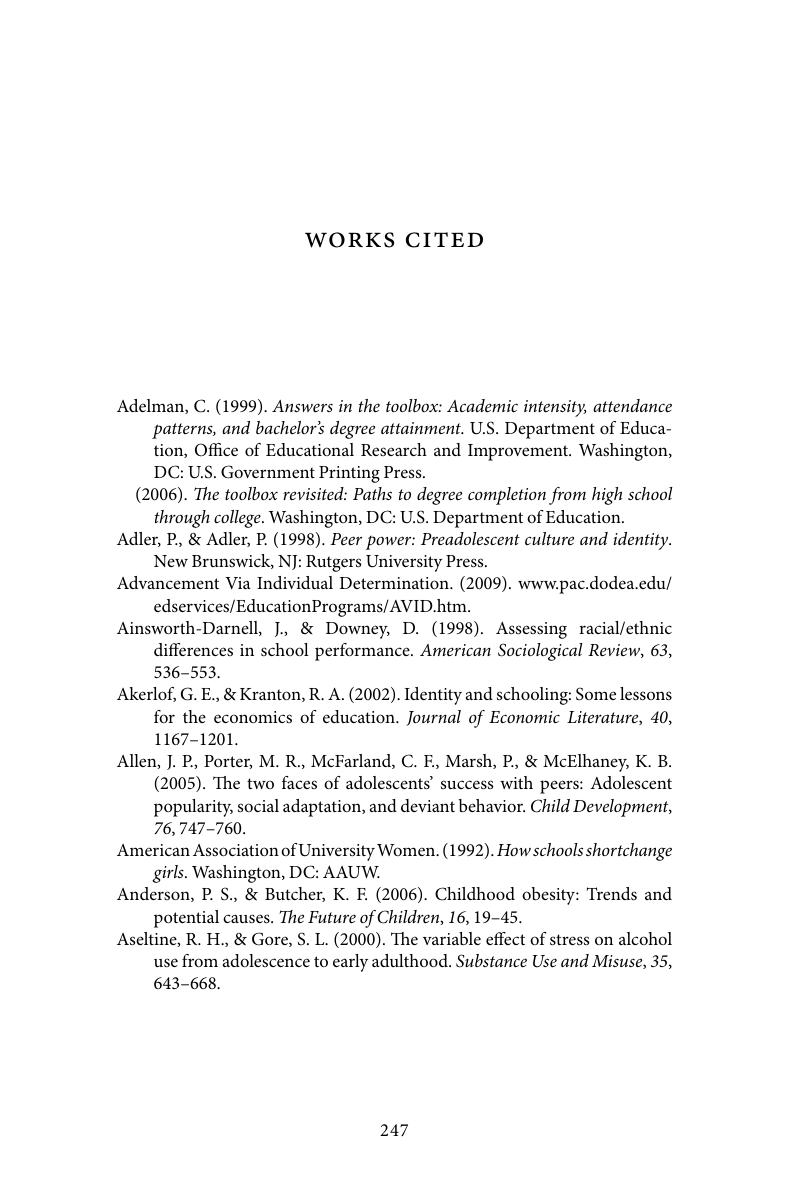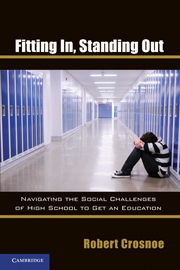Works Cited
Published online by Cambridge University Press: 05 June 2012
Summary

- Type
- Chapter
- Information
- Fitting In, Standing OutNavigating the Social Challenges of High School to Get an Education, pp. 247 - 264Publisher: Cambridge University PressPrint publication year: 2011



